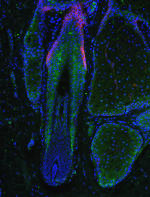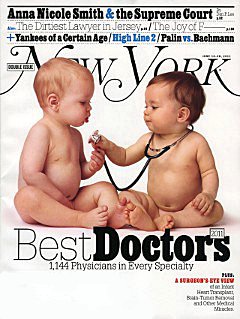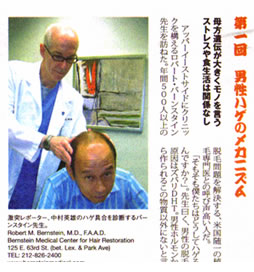
Hair Transplant Surgeons Author Hair Loss for Dummies Book
An authoritative guide explaining the causes of hair loss and the newest ways to treat it.

New York, NY (PRWEB) December 1, 2008
Renowned hair restoration surgeons Robert M. Bernstein, M.D., F.A.A.D., and Dr. William Rassman, have co-authored the first authoritative, but user-friendly guide, to help both men and women understand hair loss, its prevention, and their medical and hair transplant options. The book, published by John Wiley & Sons, Inc., is set for a December 3 publication date. Titled Hair Loss & Replacement for Dummies, the book follows in the tradition of the other informative books in the popular For Dummies series.
Dr. Bernstein is the author of numerous medical publications on hair restoration, which can be found at www.bernsteinmedical.com.
Those who follow the current trends in hair restoration and hair transplant procedures know Dr. Bernstein for his pioneering work in the development of the Follicular Unit Transplantation procedure which has revolutionized the treatment of hair loss. Recently awarded a certificate of achievement from Columbia University, he has been named one of New York Magazine’s “The Best Doctors in New York” for the ninth consecutive year.
“Dr. Rassman and I felt it was necessary to write this book because we wanted to dispel many of the myths about hair loss and give men and women basic, easily understandable information about their hair loss,” Dr. Bernstein explained. “We feel that this book will provide men and women suffering from common baldness and other types of alopecia with the tools necessary to make informed decisions about their condition. There are a lot of options when it comes to the treatment of hair loss and we want to make certain that consumers are making the decisions that are the best fit for them as individuals – whether it is medical therapy or a hair transplant.”
In addition to providing readers with information about the latest trends in hair loss medications and hair transplants, the book also aims to caution against potentially harmful products that are currently on the market for treating hair loss. Finally, the text also gives tips for maintaining a healthy head of hair: from washing and drying correctly, to caring for children’s hair.
About Dr. Bernstein
Dr. Bernstein is Clinical Professor of Dermatology at the College of Physicians and Surgeons of Columbia University in New York. He achieved worldwide recognition for pioneering Follicular Unit Hair Transplantation. He is founder of Bernstein Medical – Center for Hair Restoration in Manhattan which is devoted to the treatment of hair loss using his state-of-the-art hair restoration techniques.
Dr. Bernstein has been chosen as one of “America’s Top Doctors,” by Castle Connolly Medical and New York Magazine’s “The Best Doctors in New York” for nine consecutive years. He has been selected to be among New York Magazine’s “Best Beauty Docs in New York” for his pioneering work in Follicular Unit Transplantation and Follicular Unit Extraction and is the most widely published author on these subjects. He is the founder of Bernstein Medical -Center for Hair Restoration in New York City (www.BernsteinMedical.com).
About John Wiley & Sons, Inc. /For Dummies Series
John Wiley & Sons, Inc. was founded in 1807 during the Jefferson presidency. In the early years, Wiley was best known for publishing the works of Washington Irving, Edgar Allan Poe, Herman Melville, and other 19th-century American literary giants. By the turn of the century, the company was established as a leading publisher of scientific and technical information.
In recent years, Wiley has focused its efforts on delivering its deep reservoir of “must-have” content to global communities of interest, forming collaborative relationships with such significant partners as Dow Jones/Wall Street Journal, CNBC and PricewaterhouseCoopers, among others. In 2001, Wiley acquired Hungry Minds, Inc., including the latter company’s wildly popular For Dummies series of books. Cleverly written, packaged and marketed, all For Dummies books utilize a lighthearted approach and down-to-earth style (often including cartoons and humorous icons) to dispel fears, inspire confidence and educate the public. For more information on John Wiley & Sons, Inc., visit wiley.com.
For further reading see the Hair Loss & Replacement for Dummies summary, the transcript of an interview with Dr. Bernstein about the book, or purchase the book at Amazon.com.
Posted by Robert M. Bernstein M.D. 



 Men’s Health has published a new spotlight, called “Hair Health.” The multi-article spotlight is featured on the magazine’s website homepage and covers a wide variety of topics related to
Men’s Health has published a new spotlight, called “Hair Health.” The multi-article spotlight is featured on the magazine’s website homepage and covers a wide variety of topics related to  New York, NY — Robert M. Bernstein, M.D., F.A.A.D., world-renowned pioneer of the hair transplant techniques,
New York, NY — Robert M. Bernstein, M.D., F.A.A.D., world-renowned pioneer of the hair transplant techniques, 






